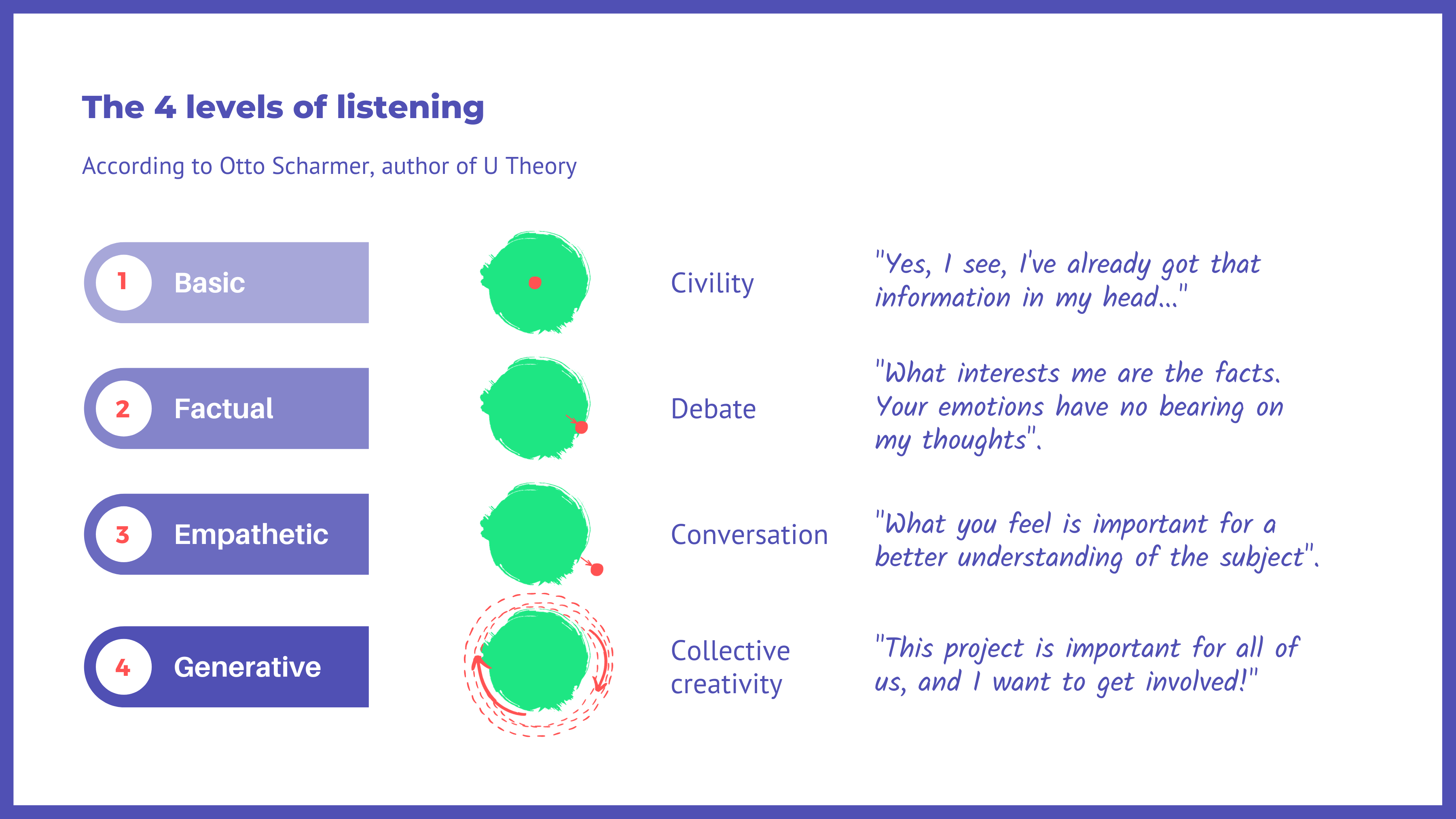To save colors and take care of the planet, print this text in shades of gray
Four levels of listening
Learn to really listen to better work together
Théorie
Introduction
The four levels of listening described below are derived from Otto Scharmer’s Theory U.
When we “listen” our automatic tendency is to:
- talk about ourselves
- give advice
- give our opinion
- console
- give a solution
All of these reactions are very different from those of empathetic listening and generative listening, which are the levels of listening necessary to work together using collective intelligence.
Description

- Basic listening is passive listening, with little interest in what is being said because you listen thinking you already know what the other person is going to say. In this mode, we don’t really listen. We listen out of “politeness” but without really being present.
- Factual listening is when we pay attention to the content and can possibly debate to adjust/update the information we have on the topic, or even change our opinion. However, in this mode, we remain at an intellectual level without paying particular attention to the feelings and emotions of the people we are speaking with.
- At the empathetic listening level, we enter into a real dialogue since it means opening ourselves up to what the speaker has to say. We then enter into a position of “resonance” with what is said rather than with the intention of validating or storing information. It means:
- being present
- reserving judgment
- not seeking to solve but to understand the other’s point of view
- using intellect, emotion and physical aspects
- Finally, generative listening corresponds to the level of listening that allows collective creativity to be developed. Beyond empathy, we are connected to the shared project and its future potential. The conversation is fluid, open and we trust each other and our intuition.
3 key components of good listening:
- Reserving judgment
Curb the natural reaction to analyse everything according to our own set of values, beliefs, and individual truths. - Avoid falling into cynicism
Curb the natural reaction to ridicule a question or situation to protect yourself in a defensive or aggressive way when an emotion is triggered. - Dare to express your emotions
Don’t be afraid to listen and share your positive and negative emotions. They form part of the information to be taken into account in the conversation.
Tips and Advice
- To create conditions conducive to empathetic or generative listening, you can invite those present to take individual time to (re)centre themselves, connect with themselves, others and the project that brings them together.
- Setting simple rules up front can help you foster a quality conversation. The dialogue circle rules are a good example of a framework you can suggest to participants.